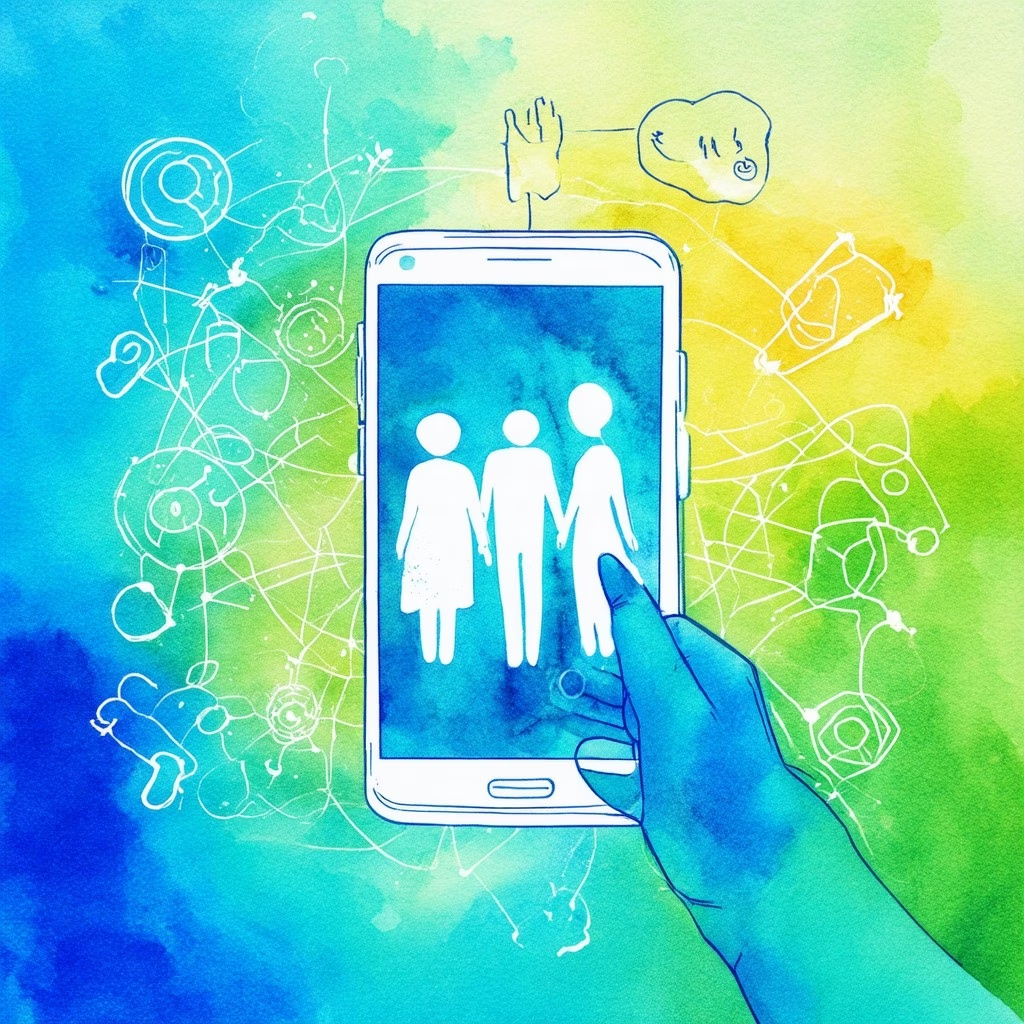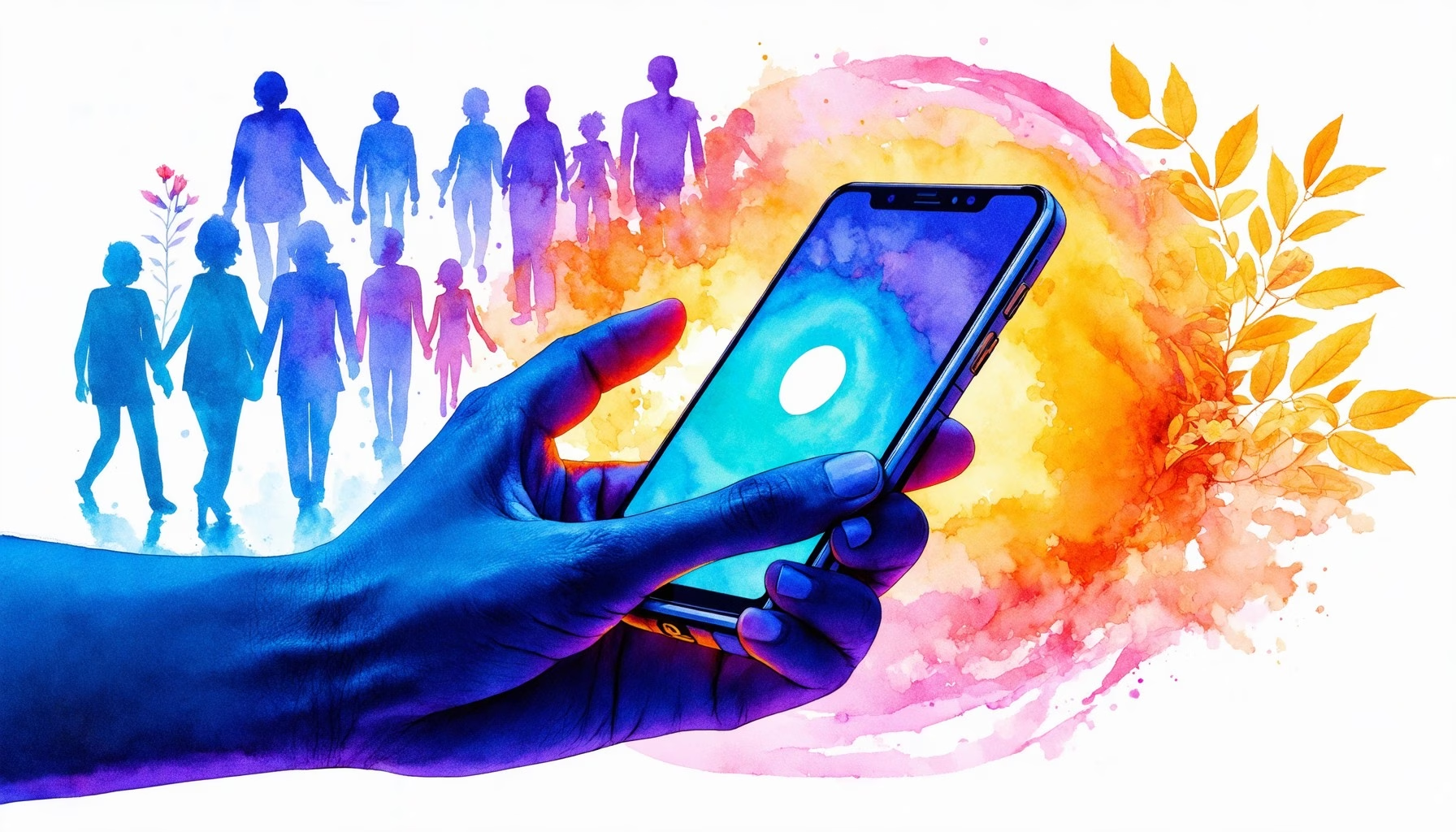Key Takeaways
- Free government assistance phones provide essential communication tools for low-income families, helping them stay connected and access vital services.
- Eligibility for these programs typically requires a household income at or below 135% of the federal poverty guidelines or participation in government assistance programs like Medicaid or SNAP.
- Applying for a free government phone is straightforward: determine eligibility, gather documentation, choose a provider, and submit the application.
- Key benefits of free government phones include enhanced communication, access to emergency services, financial relief from monthly bills, and support for education.
- Different types of free government assistance phones are available, including basic phones and smartphones, with varying plans that may include data, talk time, and texts.
In today’s digital age, staying connected is essential, especially for low-income families who may face financial barriers. This is where free government assistance phones come into play, offering vital communication tools to those in need. In this comprehensive guide, we will explore the various programs and plans available, eligibility criteria, and the application process for obtaining a free government phone. We will also delve into the numerous benefits these phones provide, including how they enhance communication for families struggling to make ends meet. Additionally, we will compare different types of free government assistance cell phones, including options for seniors and the latest 5G technology. Whether you’re searching for free government assistance phones near me or looking to understand the free government phone programs for low income, this article is designed to equip you with the knowledge and resources you need to maximize the benefits of these essential services.
What are free government assistance phones?
Understanding the Basics of Free Government Assistance Phones
Free government assistance phones are mobile devices provided to eligible low-income individuals and families to ensure they have access to essential communication services. These programs are designed to bridge the digital divide, allowing users to stay connected with family, friends, and vital services. The primary initiative behind these phones is the Lifeline program, which offers discounted or free phone services to those who qualify. By participating in this program, users can receive a free government assistance phone along with a plan that includes a set number of minutes, texts, and data each month.
Eligibility Criteria for Free Government Assistance Phone Programs
To qualify for free government assistance phone programs, applicants must meet specific eligibility criteria. Generally, these criteria include:
- Income level: Applicants must have a household income at or below 135% of the federal poverty guidelines.
- Participation in government assistance programs: Individuals enrolled in programs such as Medicaid, Supplemental Nutrition Assistance Program (SNAP), or Federal Public Housing Assistance may also qualify.
- Residency: Applicants must be residents of the state where they are applying for the free government phone service.
It’s essential to check the specific requirements for your state, as they may vary. For more detailed information on eligibility, you can visit the Lifeline Support website or refer to the Lifeline assistance program guide.

How do I apply for a free government phone?
Applying for a free government assistance phone is a straightforward process designed to help low-income individuals and families access essential communication services. Understanding the steps involved can significantly enhance your chances of successfully obtaining a free government phone. Below is a detailed guide to help you navigate the application process effectively.
Step-by-Step Guide to Applying for a Free Government Phone
- Determine Your Eligibility: Before applying, ensure you meet the eligibility criteria for free government assistance phone programs. Typically, these programs require you to participate in certain government assistance programs or meet specific income thresholds.
- Gather Required Documentation: Collect necessary documents such as proof of income, identification, and any documentation related to your participation in government assistance programs. This may include your Lifeline Support eligibility documentation.
- Choose a Provider: Research available providers in your area that offer free government assistance phone service. Each provider may have different plans and phones available, including options for free iPhone government phones.
- Complete the Application: Fill out the application form provided by your chosen service provider. This can often be done online, by mail, or in person. Ensure all information is accurate to avoid delays.
- Submit Your Application: Send your completed application along with the required documentation to the provider. Keep a copy for your records.
- Await Confirmation: After submission, you will receive confirmation from the provider regarding your application status. This may take a few days to a few weeks.
Common Mistakes to Avoid When Applying for Free Government Assistance Phones
- Incomplete Applications: Ensure all sections of the application are filled out completely. Missing information can lead to delays or denials.
- Incorrect Documentation: Double-check that you have included all required documents. Submitting incorrect or outdated documents can hinder your application.
- Not Researching Providers: Different providers may offer varying benefits and phone options. Take the time to compare free government phone programs near me to find the best fit for your needs.
- Ignoring Deadlines: Be aware of any application deadlines set by the provider. Late submissions may result in disqualification from the program.
What are the benefits of free government phones?
Free government assistance phones offer numerous advantages, particularly for low-income families and individuals. These programs are designed to ensure that everyone has access to essential communication services, which can be vital for employment, education, and emergency situations. Below, we explore the key benefits of free government phones programs.
Exploring the Benefits of Free Government Phones Programs
- Enhanced Communication: Free government assistance phones enable individuals to stay connected with family, friends, and potential employers. This connectivity is crucial for job searches and maintaining social ties.
- Access to Emergency Services: With a free government phone, users can easily reach emergency services, ensuring safety and security in critical situations.
- Financial Relief: By providing free government assistance cell phones, these programs alleviate the financial burden of monthly phone bills, allowing families to allocate resources to other essential needs.
- Support for Education: Students can benefit from free government phones by accessing online learning resources and staying in touch with educators, which is especially important in today’s digital learning environment.
How Free Government Phones Enhance Communication for Low-Income Families
Free government phone programs for low income are particularly beneficial for families struggling to make ends meet. These phones not only provide a means of communication but also serve as a lifeline to essential services and opportunities. Here are some ways these phones enhance communication:
- Job Opportunities: Many employers require applicants to have a phone for interviews and communication. Free government phones help low-income individuals access job opportunities they might otherwise miss.
- Health Services: Access to healthcare providers is crucial, and free government assistance phone service allows families to schedule appointments and receive important health information.
- Community Resources: Families can stay informed about local resources, such as food banks and financial assistance programs, which can provide additional support during tough times.
What types of free government assistance phones are available?
When exploring free government assistance phones, it’s essential to understand the variety of options available to you. These phones are designed to provide essential communication services to low-income individuals and families, ensuring they stay connected. Below, we will delve into the different types of free government assistance cell phones and plans that you can access.
Overview of Free Government Assistance Cell Phones and Plans
The primary types of free government assistance phones include basic cell phones and smartphones, with various plans tailored to meet the needs of users. Most programs offer:
- Basic Cell Phones: These devices typically come with essential features such as calling and texting capabilities. They are ideal for individuals who require straightforward communication without the need for advanced technology.
- Smartphones: Some programs provide access to smartphones, including options like the free iPhone government phone. These devices allow users to access the internet, download apps, and utilize various communication platforms.
- Data Plans: Depending on the program, users may receive a free government assistance phone plan that includes a limited amount of data, talk time, and text messages. This ensures that users can communicate effectively without incurring additional costs.
For more detailed information on specific plans, you can visit the Lifeline program details.
Comparing Free iPhone Government Phone Options
When considering a free government assistance phone, many individuals are particularly interested in the availability of smartphones, including the free iPhone government phone. These options can vary significantly based on the provider and the specific program. Here are some key points to consider:
- Eligibility: Not all programs offer iPhones, and eligibility may vary. It’s crucial to check the specific requirements of each program to determine if you qualify for a smartphone.
- Provider Differences: Different carriers may have varying offerings. Some may provide the latest iPhone models, while others might only offer older versions or different brands altogether.
- Plan Features: Ensure you review the details of the free government assistance phone plan associated with the iPhone. This includes data limits, talk time, and any additional features that may be included.
For a comprehensive comparison of available options, consider visiting Securing free phone service.

How do free government assistance phones support low-income families?
Free government assistance phones play a crucial role in supporting low-income families by providing essential communication tools that enhance their quality of life. These programs are designed to ensure that everyone, regardless of their financial situation, has access to basic communication services. By offering free government assistance cell phones, families can stay connected with loved ones, access vital services, and seek employment opportunities.
The Role of Free Government Phones in Supporting Low-Income Families
Free government phones programs are instrumental in bridging the communication gap for low-income families. Here are some key benefits:
- Access to Emergency Services: With a free government assistance phone, families can easily reach emergency services, ensuring safety and security in critical situations.
- Job Opportunities: Many job applications and interviews are conducted over the phone. Having a reliable phone allows low-income individuals to pursue employment opportunities effectively.
- Healthcare Access: Families can schedule medical appointments and communicate with healthcare providers, which is vital for maintaining health and well-being.
- Educational Resources: Children can access educational resources and communicate with teachers, which is essential for their academic success.
Free Government Phone Programs for Low Income: A Comprehensive Overview
There are several free government phone programs available for low-income families, each with specific eligibility criteria and benefits. Some notable programs include:
- Lifeline Program: This federal program offers discounts on monthly phone service and is available to eligible low-income households. For more details, visit the Lifeline program details.
- State-Specific Programs: Many states have their own free government phone programs tailored to local needs. For instance, Florida offers specific programs that cater to residents.
- Non-Profit Initiatives: Various non-profit organizations also provide free public assistance phones to those in need, ensuring that no one is left without communication access.
How do free government assistance phones support low-income families?
Free government assistance phones play a crucial role in supporting low-income families by providing essential communication tools that enhance their access to vital services. These programs ensure that families can stay connected with healthcare providers, educational institutions, and job opportunities, which is particularly important in today’s digital age. By offering free government assistance phones, these initiatives help bridge the communication gap for those who may otherwise struggle to afford a reliable phone service.
The Role of Free Government Phones in Supporting Low-Income Families
Free government phones programs are designed to alleviate some of the financial burdens faced by low-income families. With a free government assistance phone, families can:
- Access Emergency Services: Having a phone allows families to call for help in emergencies, ensuring their safety and well-being.
- Stay Connected: Communication with family members, friends, and support networks is vital for emotional support and practical assistance.
- Utilize Educational Resources: Many educational programs require access to the internet and communication tools, which free government assistance cell phones can provide.
- Seek Employment: Job seekers can apply for positions, attend interviews, and communicate with potential employers, increasing their chances of securing employment.
These benefits highlight the importance of free government phones in empowering low-income families to improve their circumstances and maintain essential connections.
Free Government Phone Programs for Low Income: A Comprehensive Overview
There are several free government phone programs available for low-income families, each with unique features and eligibility criteria. Some of the most notable programs include:
- Lifeline Program: This federal program offers discounted phone services to eligible low-income individuals. For more details, visit the Lifeline program details.
- SafeLink Wireless: A popular provider of free government assistance phones, SafeLink offers plans that include unlimited talk and text, along with data options.
- Assurance Wireless: This program provides free government phones and plans, including features like voicemail and call waiting, to eligible low-income families.
- Access Wireless: Another option that offers free government assistance phone service, Access Wireless provides various plans tailored to meet the needs of low-income users.
By exploring these options, families can find the right free government phone programs for low income that suit their needs and help them stay connected. For more information on securing free phone service, check out our guide on securing free phone service.
How do free government assistance phones support low-income families?
Free government assistance phones play a crucial role in supporting low-income families by providing essential communication tools that enhance their access to resources, employment opportunities, and emergency services. These phones are not just a means of communication; they serve as a lifeline for families who may struggle to afford traditional phone services. With free government assistance phone programs, families can stay connected with healthcare providers, schools, and potential employers, which is vital for their overall well-being and stability.
The Role of Free Government Phones in Supporting Low-Income Families
Free government phones are designed to bridge the communication gap for low-income families. Here are some key ways they support these households:
- Access to Essential Services: Families can easily contact healthcare providers, social services, and educational institutions, ensuring they receive necessary support and information.
- Job Opportunities: With a reliable phone, individuals can apply for jobs, attend interviews, and communicate with employers, significantly improving their chances of securing employment.
- Emergency Communication: In times of crisis, having a phone can be lifesaving. Families can reach out for help or contact emergency services quickly.
- Social Connectivity: Maintaining connections with friends and family is crucial for emotional support, and free government phones enable this connectivity.
Programs like the Lifeline program provide these essential services, ensuring that low-income families have the tools they need to thrive.
Free Government Phone Programs for Low Income: A Comprehensive Overview
Several free government phone programs cater specifically to low-income families, offering various benefits and services:
- Lifeline Assistance: This federal program provides discounts on phone service, including free government assistance cell phones, to eligible low-income households.
- State-Specific Programs: Many states have their own initiatives, such as Florida’s Lifeline program, which offers additional support tailored to local needs.
- Non-Profit Organizations: Various non-profits partner with government programs to distribute free government phones and assist families in navigating the application process.
By leveraging these resources, low-income families can access free government phones programs that significantly enhance their quality of life and provide essential support in their daily lives.




